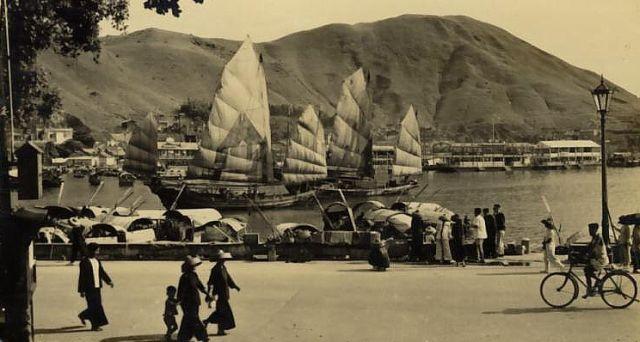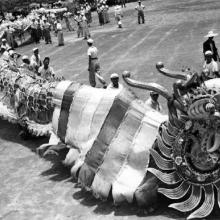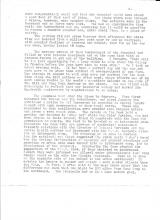Taken from the Aberdeen Praya Road with the floating restaurant in the background.
Aberdeen
Primary tabs

Submitted by moddsey
Date picture taken (may be approximate):
Sunday, January 1, 1950
Gallery:
Connections:
- Aberdeen shows Place Aberdeen Harbour [????- ]




Comments
nice photo,a nd you have the
No original,
just the scanned image that was sent to me.
Barren Hills
No trees
That's an easy one: because the indigenous inhabitants of this area chopped down all of the original trees.
You've noted one of the striking features of the HK landscape. Although these days we all complain about the pollution and urbanization, HK's actually a much greener place than it used to be, at least in terms of trees. Lots of trees were planted during the colonial period, and more have grown back naturally, so now large parts of HK's countryside are again forested, albeit not in 'old growth'.
I've often wondered too why the trees tend to come back faster on the northerly slopes here; this is noticeable all over the SAR. Can anybody with some botany knowledge help us out?
Some geoglogy aspects should be considered too
There are not too many trees in Apleichau these days
North / South-facing hillsides
The difference is really obvious on the line of hills along the back of Kowloon. Walk up from Sha Tin on the north side and it's all leafy & shady, then crest the hill to to reach the south side and it's suddenly bare.
The southern hillside also changes through the year. If you look at it from Hong Kong island (when you can see that far through the smog) it looks look green & lush during summer, but by the end of the winter they look quite brown.
I've always assumed it's a combination of thin soil and sunlight. The South side gets lots of sun and is baked dry, whereas the North side stays damp enough to support larger plants and trees.
MrB
Forestry of Hong Kong
The secondary forest that we see today around Hong Kong is post 1945 (http://hub.hku.hk/bitstream/10722/42380/1/31064.pdf)
The really old trees (e.g. Chinese banyan) that have survived are usually found in old villages and former British military barracks (Hong Kong and Kowloon Parks).
Vegetation on Hong Kong Island
In the mid 1950s most of the hills on the island were covered with just ankle high short grass and very low scrub. We used to roam freely all over Pottinger Peak and the area between the Cape Collinson road and Big Wave Bay and even up Mt Parker. The Dairy Farm was experimenting with the planting of thousands of clumps of grass on the Western slopes of the Dragon's Back just above the road leading to Cape D'Aguilar and Shek O. I was told that this was to provide feed for the dairy herd. In 1981 I returned to HK for a holiday and was amazed at the growth of much taller and largely impenetrable scrub, covering all these hills. later, I wrote to the Professor of Botany at the HK University and he suggested that much of the taller vegetation had been chopped down for fuel during 1941/5, and that there was also a policy to create a richer ground cover that would favour a more bio-diversifed animal, bird and insect life. In the mid 1950s fires on the hills were not uncommon and it was said that this was because the farmers were burning off the low vegetation in order to acquire potash for their fields. Now, there are virtually no farms on the Island so there is no need for 'free' fertiliser and I doubt whether the Dairy Farm even has a herd of cows. The denser vegetation also possibly gives more stability to the slopes. In recent years I have enjoyed walking the excellent paths that have been developed over many of the Island's hills but I often wish that I could easily leave them and roam freely over the 'barren hills' of my youth!